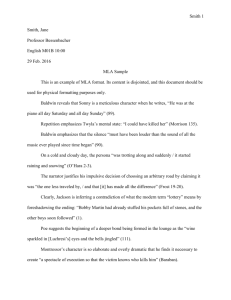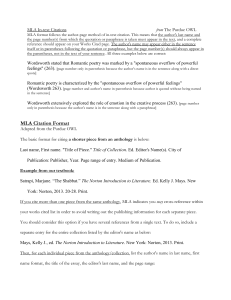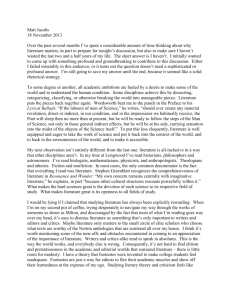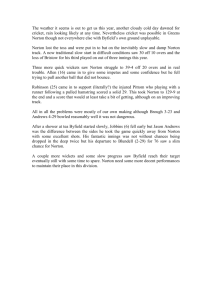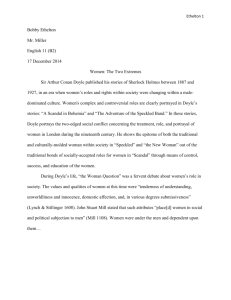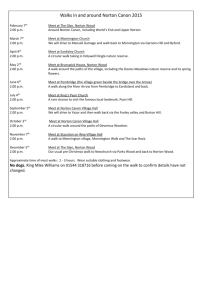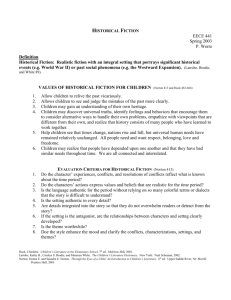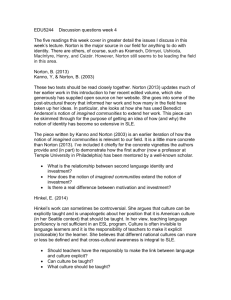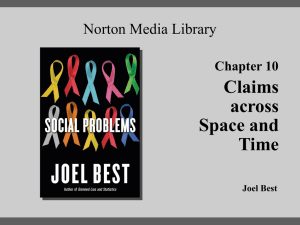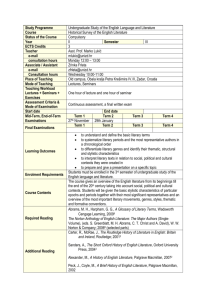ESSAY DOCUMENTATION -- HELP SHEET ENC 1102
advertisement
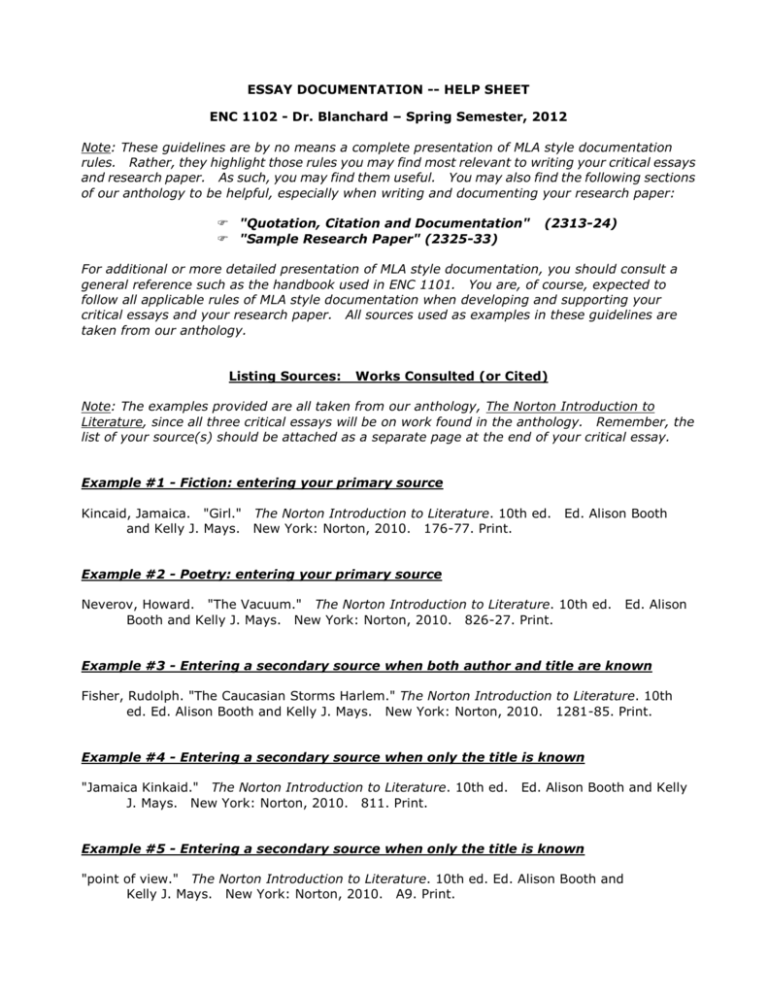
ESSAY DOCUMENTATION -- HELP SHEET ENC 1102 - Dr. Blanchard – Spring Semester, 2012 Note: These guidelines are by no means a complete presentation of MLA style documentation rules. Rather, they highlight those rules you may find most relevant to writing your critical essays and research paper. As such, you may find them useful. You may also find the following sections of our anthology to be helpful, especially when writing and documenting your research paper: "Quotation, Citation and Documentation" "Sample Research Paper" (2325-33) (2313-24) For additional or more detailed presentation of MLA style documentation, you should consult a general reference such as the handbook used in ENC 1101. You are, of course, expected to follow all applicable rules of MLA style documentation when developing and supporting your critical essays and your research paper. All sources used as examples in these guidelines are taken from our anthology. Listing Sources: Works Consulted (or Cited) Note: The examples provided are all taken from our anthology, The Norton Introduction to Literature, since all three critical essays will be on work found in the anthology. Remember, the list of your source(s) should be attached as a separate page at the end of your critical essay. Example #1 - Fiction: entering your primary source Kincaid, Jamaica. "Girl." The Norton Introduction to Literature. 10th ed. and Kelly J. Mays. New York: Norton, 2010. 176-77. Print. Ed. Alison Booth Example #2 - Poetry: entering your primary source Neverov, Howard. "The Vacuum." The Norton Introduction to Literature. 10th ed. Booth and Kelly J. Mays. New York: Norton, 2010. 826-27. Print. Ed. Alison Example #3 - Entering a secondary source when both author and title are known Fisher, Rudolph. "The Caucasian Storms Harlem." The Norton Introduction to Literature. 10th ed. Ed. Alison Booth and Kelly J. Mays. New York: Norton, 2010. 1281-85. Print. Example #4 - Entering a secondary source when only the title is known "Jamaica Kinkaid." The Norton Introduction to Literature. 10th ed. J. Mays. New York: Norton, 2010. 811. Print. Ed. Alison Booth and Kelly Example #5 - Entering a secondary source when only the title is known "point of view." The Norton Introduction to Literature. 10th ed. Ed. Alison Booth and Kelly J. Mays. New York: Norton, 2010. A9. Print. ENC 1102 - Documentation Help Sheet (2) In-Text, Parenthetical Citations Remember: A parenthetical citation is a note in parentheses you insert in the text of your essay when you 1) quote, 2) paraphrase or 3) summarize a research source to ensure you are not plagiarizing. This notation must clearly reference a source you have entered in your list of works consulted (or cited), as explained on page one. Example #1: Citing a short quotation of prose (four or fewer lines) (author named) The protagonist, who is the "girl" of Kincaid's title, is told by the unnamed speaker "don't sing benna in Sunday school; you mustn't speak to wharf-rat boys, not even to give directions; don't eat fruits on the street -- " (176). (Note: When citing prose quotations, use page numbers; DO NOT note the author’s name if the author is noted in your text OR the author of the source is obvious. ) Example #2: Citing a long quotation of prose (more than four lines) (author uncertain) The protagonist in this story occasionally attempts to defend herself from the dominant speaker's accusations, both implied and explicit: don't sing benna in Sunday school; you mustn't speak to wharf-rat boys, not even to give directions; don't eat fruits on the street -- flies will follow you; "but I don't sing benna on Sundays at all and never in Sunday school"; this is how to hem a dress when you see the hem coming down and so to prevent yourself from looking like the slut I know you are so bent on becoming; (Kincaid 176) Example #3: Citing a short quotation of poetry (three or fewer lines) (author uncertain) The narrator seems to be severely depressed after the death of the woman who used the vacuum cleaner from which the poem get its title. He says, "I've lived this way long enough, / But when my old woman died her soul / Went into that vacuum cleaner . . . " (Nemerov 6 - 8). (Note: When citing quotations of poetry, use line numbers and show line breaks.) Example #4: Citing a long quotation of poetry (more than three lines) (author named) In the final lines of the poem, Nemerov completes the metaphor in which he compares the vacuum cleaner to his dead wife as well as to his own despairing self: She used to crawl, in the corner and under the stair. I know now how life is cheap as dirt, And still the hungry, angry heart Hangs on and howls, biting at air. (12-15) (Note: If the identity of the author of a quotation is obvious from the text of your essay, you should not name the author in your parenthetical citation. Keep the citation as simple as possible.)
